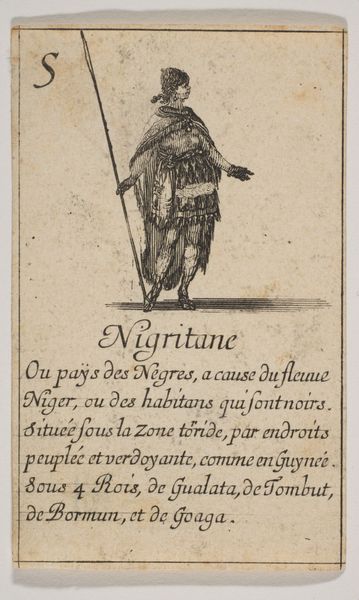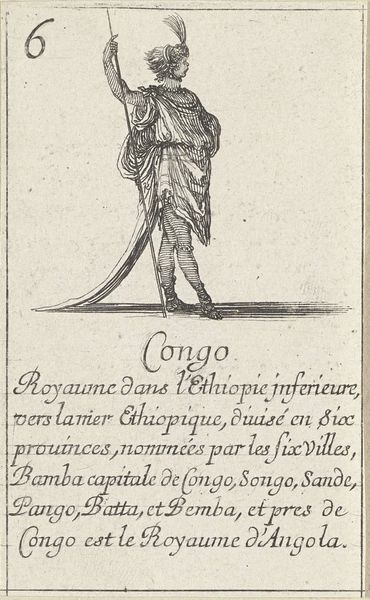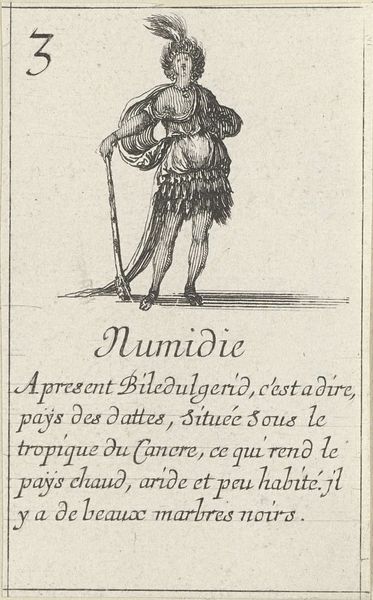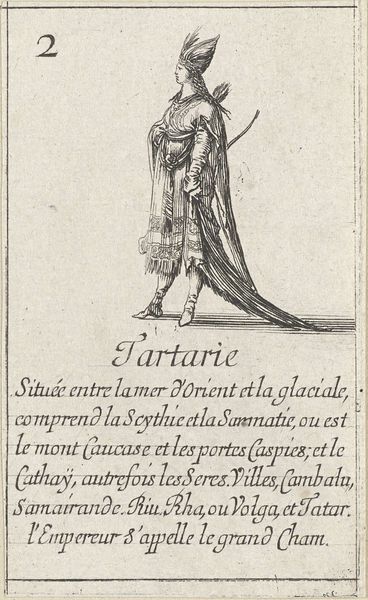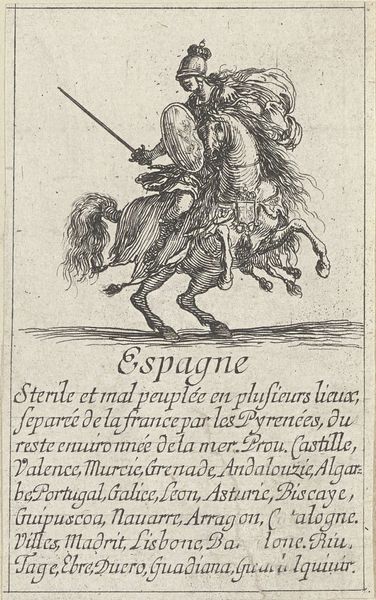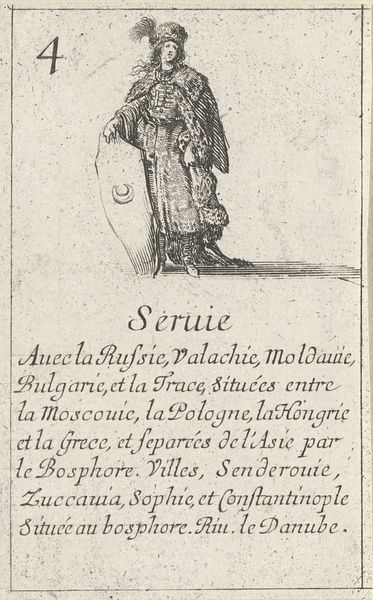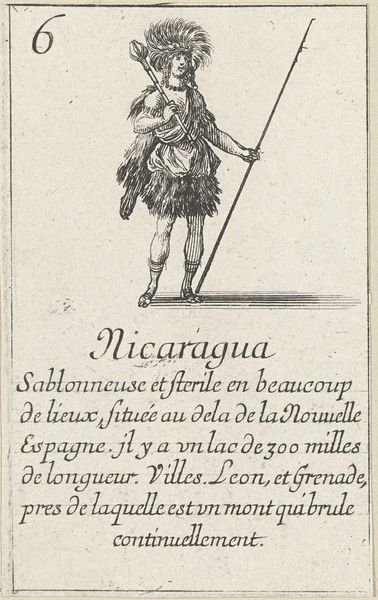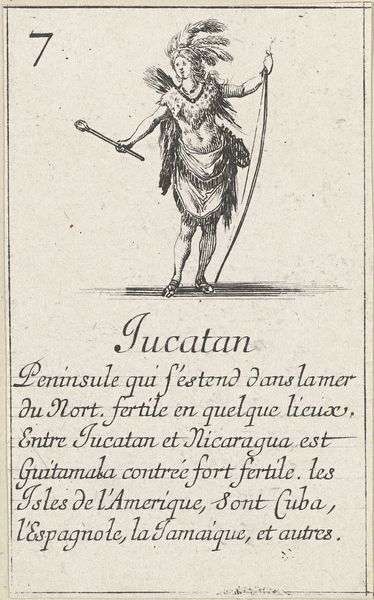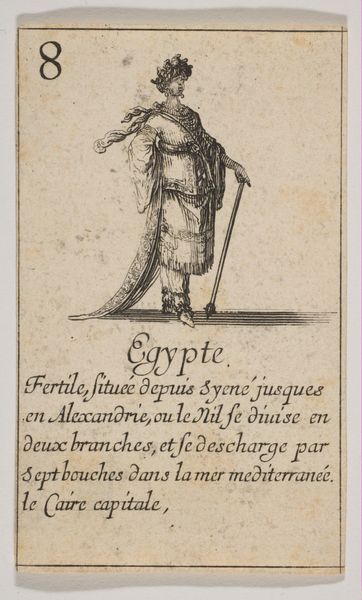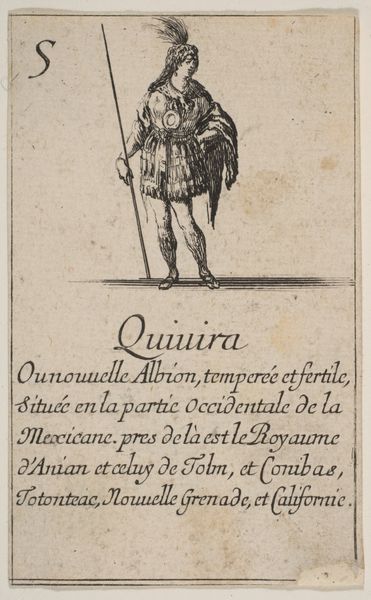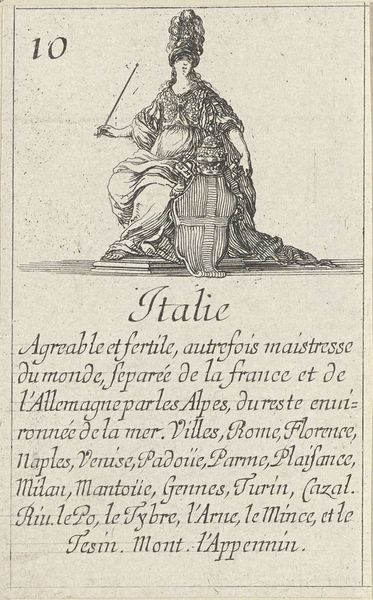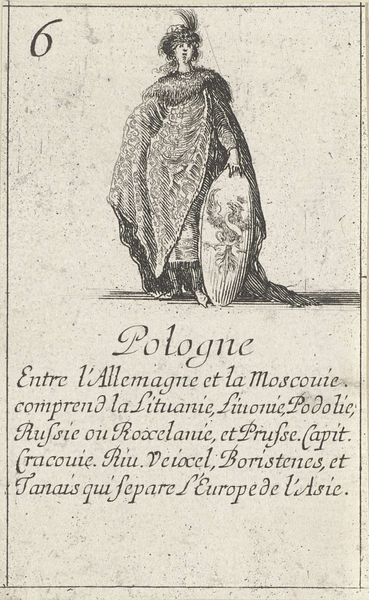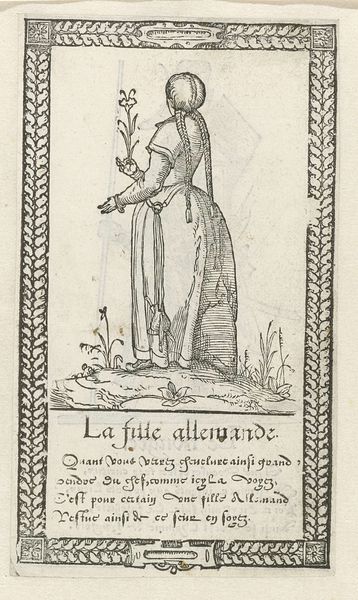
print, engraving
#
portrait
# print
#
old engraving style
#
line
#
engraving
Dimensions: height 89 mm, width 55 mm
Copyright: Rijks Museum: Open Domain
Curator: This print, dating from between 1620 and 1664, is titled "Vrouw uit Nigeria," or "Woman from Nigeria." It's an engraving by Stefano della Bella, and it currently resides here at the Rijksmuseum. Editor: My immediate reaction is that of observing an imagined archetype. There's a posed formality here, a figure deliberately placed, not necessarily someone caught in a candid moment. I also wonder, where does the symbolic weight of the spear originate? Curator: Indeed. Consider the social lens through which Della Bella, an Italian artist, might have viewed and represented this figure. How much does this engraving reveal about 17th-century European perceptions of Africa, filtered through colonial desires and early ethnographic attempts at classification? The very choice of the title is worth noting—grouping disparate peoples under the umbrella of a single nation. Editor: Absolutely, the title "Nigritane" tells its own story! Also, note the inscription below the figure: a definition tying it to the Niger river, the black inhabitants, and a description reminiscent of Guinea. This connection through writing reinforces that sense of imposing an identity from a Western gaze. What could the intended audience at the time infer through those generalized signifiers? Curator: It suggests a presumed understanding—or rather, misunderstanding—of complex cultural realities. There is no lived context given, rather, a homogenization. Consider the attire; the spear, an obvious symbol of power or perhaps perceived 'savagery'; these visual cues create an exoticized narrative detached from individual agency. Editor: I think the clothing is crucial here too. Beyond potential signifiers of rank, or tribal/regional identities, the patterns evoke something powerful. Della Bella employed intricate cross-hatching and varied line weights throughout. How were patterns employed in dress at the time for both secular and sacred practices in the artist's vision of Nigeria? Curator: We see visual cues meant to speak to status, land, access, and it becomes an anthropological text. We must challenge our reading in terms of gender too. A reading of a singular Black female figure through modern notions of colonial objectification asks important questions around identity. Editor: Seeing it with these narratives in mind makes me deeply uneasy about its initial, straightforward appearance. Curator: Precisely, by engaging critically, we uncover layers of historical complexity and social implications encoded in these lines. Editor: Right. Let's carry this awareness as we continue through the exhibit.
Comments
No comments
Be the first to comment and join the conversation on the ultimate creative platform.
